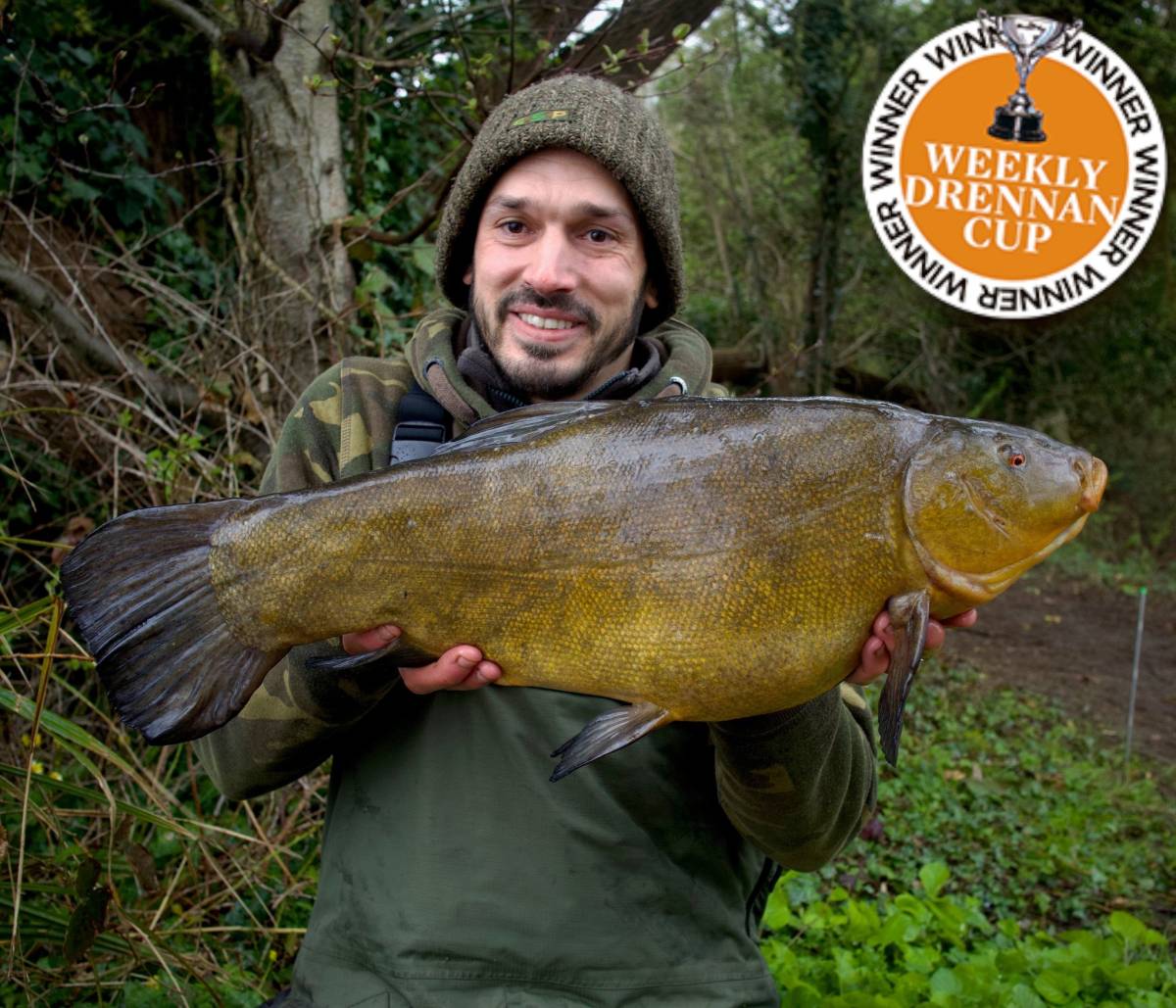
He told us “many specimen anglers think that tench are ‘hollow’ in early spring, but I’ve found that they pile on the pounds quickly and can be well worth targeting at this early stage of the year.That’s exactly what I’ve been doing lately and managed this 11lb 1oz fish on a recent session. As you can see from the picture, it’s certainly not skinny! That’s because soon after waking from their winter slumber, big tench start feeding well in a bid to pile on the pounds and condition ahead of spawning. So, as soon as it starts to warm up slightly, I waste no time in getting the rods out!There are other advantages to starting your tench campaign early. For one, clean areas of lakebed are much easier to find when there generally isn’t much weed about. I like to present my baits near gravel bars, particularly the front and backs of them. These areas are natural patrol routes for tench, so there’s always the chance of a fish or two rocking up. Some people like to target the tops of bars, but I prefer the slightly deeper water down either side of them at this relatively early stage.
Although clear areas are best for presentation purposes, tench love fresh weed growth too, as the stuff is a larder for natural food, but later in spring when there’s an abundance of it, the tench can become tricky to catch and the fishing can be frustrating. I’ve had times when fish are rolling all over my spots, but I can’t get a bite, and I’m sure it’s because they’re so focussed on the bloodworm and other naturals. Sometimes it feels like you could put a maggot right on their nose and they’d ignore it! That said, however, in April and early May I’ve found it can be really productive to fish clear areas close to any fresh spring weed growth – in fact, I had this fish from exactly that type of spot.
When it comes to tactics, until they really start to get their heads down later in the season, I like to go easy on the loosefeed and keep the food content low. So rather than piling in loads of particles, I focus more on a groundbait approach. This attracts and holds fish in the swim but gives them very few larger items to actually feed upon, which in turn helps them to find my hookbait. I add a few dead maggots to my mix, but not too many, and I’ll introduce between five and eight Spombs of this mix over my spots at the start of a session.
Some people use pellets and boilies early in the season for tench as these baits are rich in nutrients, but I don’t think you can beat maggots. They’re certainly my go-to bait, so long as the water isn’t full of small silverfish. The way I fish them is super-simple, using a maggot feeder rigged up helicopter-style, with a short fluorocarbon hooklink spinning above it. My hookbait will be a few live maggots mounted directly on the hook. It’s uncomplicated stuff!
This conservative feeding approach certainly worked for this fish, which I knew was a cracker as soon as I hooked it. There was a slightly nervy moment when it kited towards a tree to my right and, for a moment, managed to reach it. Thankfully, the line just pinged off the branches, and I was delighted to slip the net under the fish soon after. So, if you’ve got your sights set on a big tench this season but were planning to hold off until later in the year, my advice would certainly be to get out there and have an early go for them. In my experience, it’s well worth the effort!”
Well done Dan!
